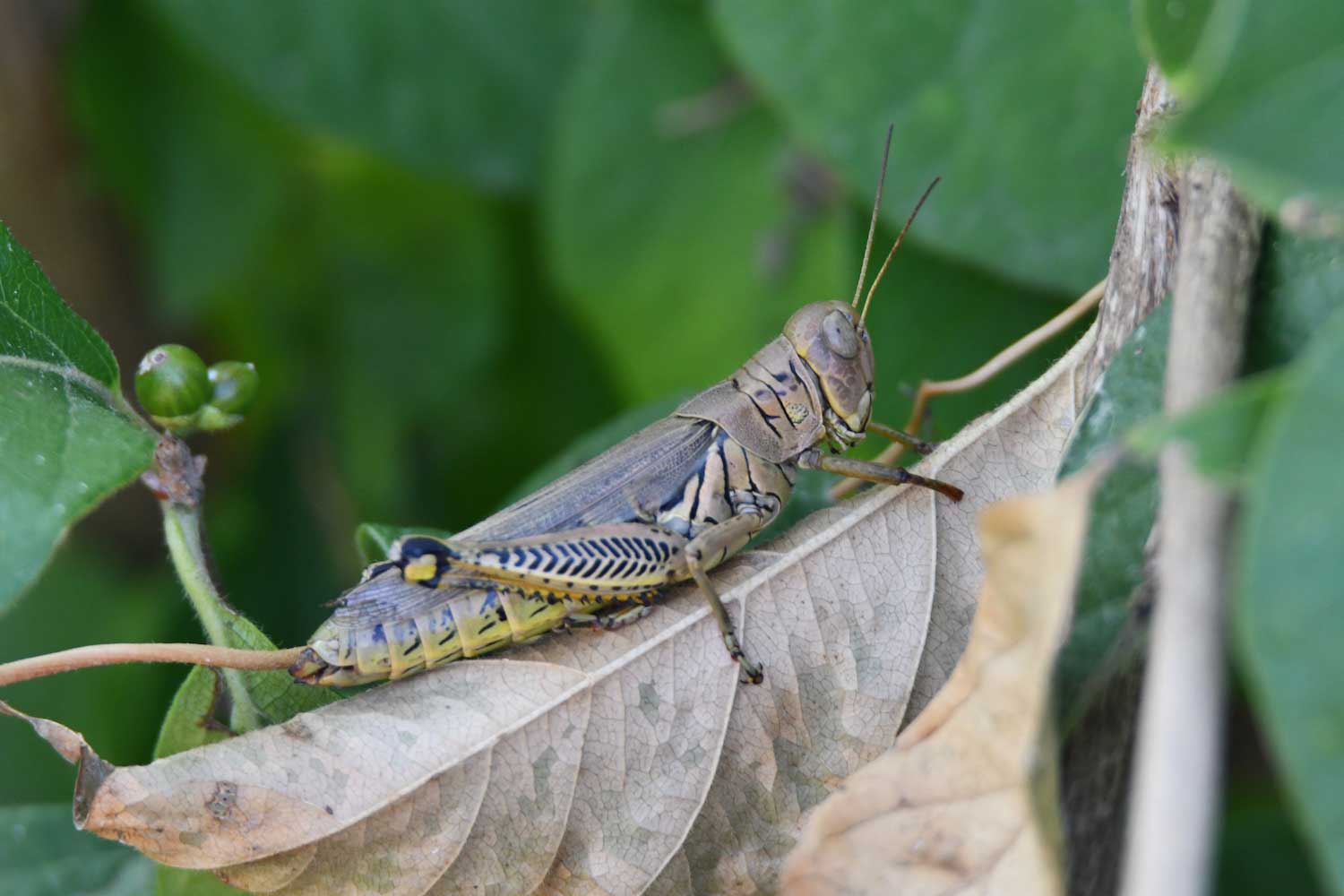What's the difference?: grasshopper vs. katydid vs. cricket

When you think about the sounds of summer, what do you hear? Maybe the familiar notes of "Turkey in the Straw" as the ice cream truck circles the neighborhood or the sounds of kids playing outside. The loud buzz of cicadas probably comes to mind too. But cicadas aren't the only insects making a racket out there. We hear other insects too as summer days turn into nights.
Who are all these insects singing those songs of summer? Cicadas are the noisiest of our singing insects, and their song leaves a lot to be desired, but grasshoppers, katydids and crickets are also singing their tunes, although distinguishing between them can be difficult because we tend to lump them all together without learning what differentiates them.
Crickets, grasshoppers and katydids all belong to the insect order Orthoptera. Most insects in this order don't fly, although they do have wings. Of course, there are frequently exceptions in nature, and some grasshopper species do fly.
Another characteristic of Orthoptera insects is their strong hind legs that are adapted for jumping, and they are also noted for their sound-making ability. Generally, only the males make noise, and they use the sounds to attract a mate, according to the University of Illinois. Their sounds and how they produce them vary, but they all make sound using stridulation — the act of rubbing the upper surface of a wing against the lower surface of a wing or leg surface.
The sounds they make are one of the things that can be used to differentiate between crickets, grasshoppers and katydids, starting with the time of day when you hear them. Crickets generally begin calling at dusk, while katydids wait until later at night to begin singing their songs, according to the Iowa State University Extension. Grasshoppers are mostly active and calling during the day.
The songs themselves can also be a key identifier for a discerning ear. Crickets create sound by rubbing a peg on one wing against a row of ridges on the other wing, the Iowa State extension reports. This movement creates a series of clicks that sounds like running a fingernail down the teeth of a comb. Because the rubbing movement is so quick, you don't hear the individual clicks, just the collective sound created.
Like many birds, katydids sing a song that sounds like they are calling out their name — kay-tee-did or kay-tee-did-did. This song becomes common in late summer, and it's often sung three times in a row, according to the Iowa State extension. They are able to create the sound by rubbing one of the hind legs on one of their wings.
Grasshoppers stridulate in the same way as katydids, by rubbing a hind leg against a wing. And like crickets, this action is similar to running a fingernail down a comb. Their sound is different, however, sounding more like rubbing two pieces of sandpaper together, the Missouri Department of Conservation reports.
While crickets, katydids and grasshoppers are more often heard than seen, you may encounter them while outdoors. They may even make their way indoors from time to time, surely making their presence known when you hear them calling out. Many species exist of all three kinds of insects, leading to a lot of variation in size, color and even sounds, but crickets are generally easy to distinguish, while katydids and grasshoppers look more similar and can be confused for one another.
Crickets are dark in appearance, either black or dark brown. And because they are mostly nocturnal, we don't typically encounter them during the day, according to the Phipps Conservatory and Botanical Gardens.
Katydids and grasshoppers are both green, but different shades. Katydids tend to be a bright green color, while grasshoppers are more earthy green. Their antennae are also different lengths. Katydids have longer antennae, often longer than the length of their bodies, the Phipps Conservatory reports. Grasshoppers typically have shorter and thicker antennae.
Where you might stumble upon these insects might vary as well. Not surprisingly, grasshoppers are usually found in the grass. Crickets, too, are often seen in the grass. Katydids, though, are commonly seen in trees and on other leafy plants, relying on their green coloration to blend in with the vegetation.
